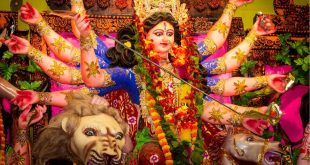
Unlocking the Mysteries of Mahashivratri 2024: A Divine Celebration
Embracing the Spiritual Spectacle
Mahashivratri, celebrated annually on the fourteenth day of the Falgun month, holds profound significance in the Hindu calendar. On March 8th this year, the entire nation is immersed in the grandeur of Mahashivratri, a day revered for seeking the blessings of Lord Shiva and Goddess Parvati. It is believed that this auspicious day marks the celestial union of Bholenath and Mata Parvati. Let’s delve into the intricacies of this divine celebration and explore the various facets of Lord Shiva’s divine persona.
Lord Shiva’s Many Names: Mystique Unveiled
Bholenath, the merciful one, is known by various names, each reflecting a unique aspect of his divine essence. From Mahakal and Adidev to Chandrashekhar and Trilochan, the list is extensive. Have you ever heard of the title ‘Aughad Dani’? Let’s unravel the meaning of this intriguing epithet and delve into a captivating narrative associated with Lord Shiva.
Aughad Dani: The Selfless Giver
In contemporary times, the act of selfless giving is a rarity. People often contemplate the extent of their generosity, considering their limitations. However, there exists a paradigm of selfless giving, and that is none other than Lord Shiva, the Aughad Dani. When Bholenath bestows, he does so without hesitation or calculation. Let’s explore the profound meaning behind Aughad Dani and immerse ourselves in an enchanting tale associated with Lord Shiva.
The Tale of Bhasmasur: A Riveting Narrative
According to ancient scriptures, a devoted follower named Bhasmasur approached Lord Shiva with a unique request. He sought a blessing that would turn anyone upon whose head he placed his hand into ashes. Without a second thought, Lord Shiva granted this boon. However, the repercussions of this boon unfolded dramatically when Bhasmasur set his eyes on the enchanting Goddess Parvati. The divine intervention of Lord Narayana and the subsequent turn of events form a captivating saga that underscores the complexities of divine blessings.
Narayana’s Intervention: Preserving Goddess Parvati’s Honor
Witnessing Bhasmasur’s unwarranted advances towards Goddess Parvati, Lord Narayana assumed a mesmerizing female form. Approaching Bhasmasur, Narayana proposed a challenge, stating that only if he could match her dance moves, would she agree to marry him. Little did Bhasmasur realize that this challenge would lead to his own demise. As he imitated Narayana’s dance, placing his hand on his head and hip as instructed, he unwittingly turned himself into ashes.
Unraveling the Divine Paradox
The tale of Bhasmasur serves as a poignant reminder of the paradoxical nature of divine blessings. Lord Shiva, in his benevolence, bestows without deliberation, emphasizing the purity of his intent. As we celebrate Mahashivratri, let us reflect on the essence of selfless giving and embrace the divine teachings encapsulated in the mystique of Lord Shiva.
 Suspense Crime Sach Ka Dam
Suspense Crime Sach Ka Dam


